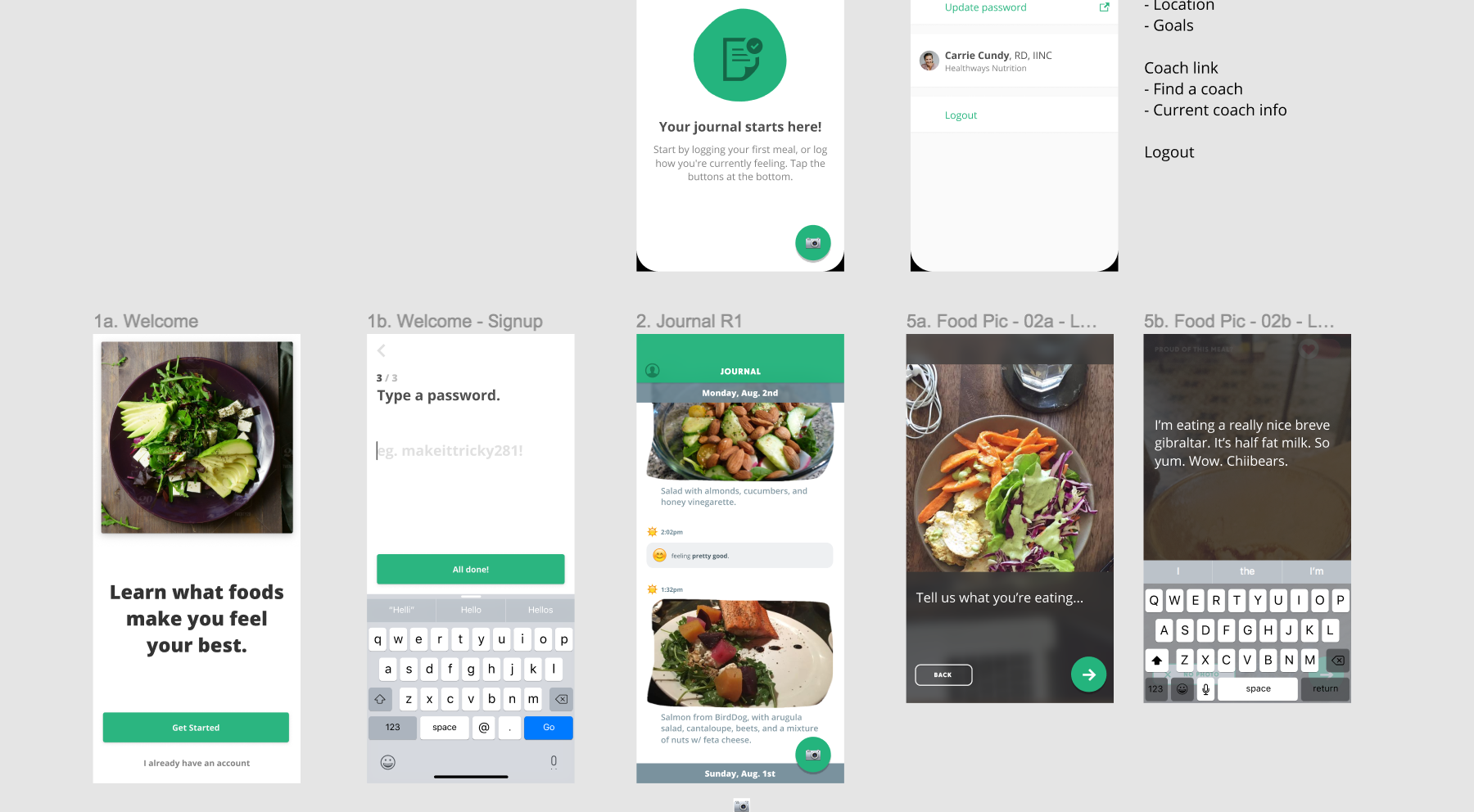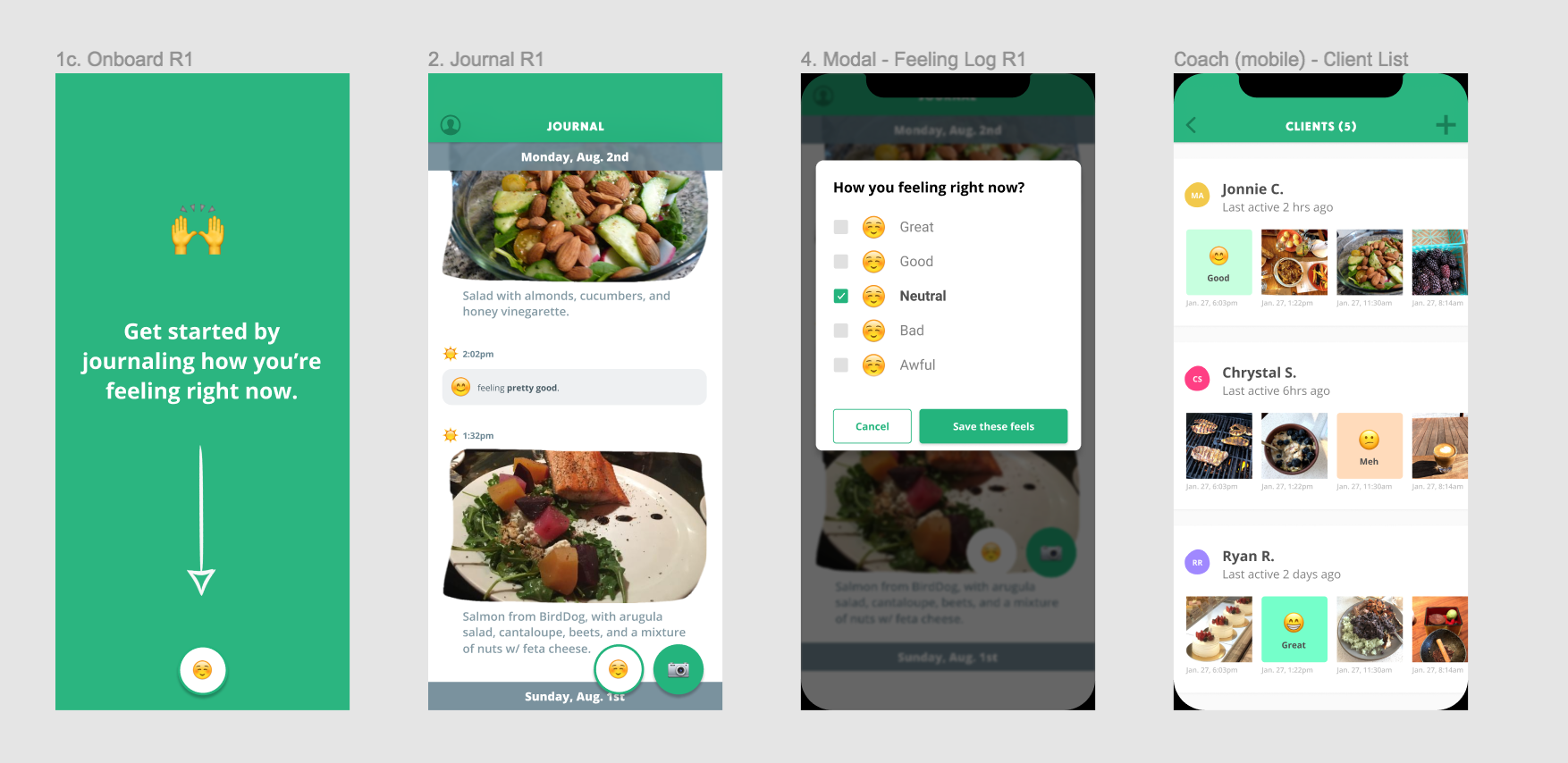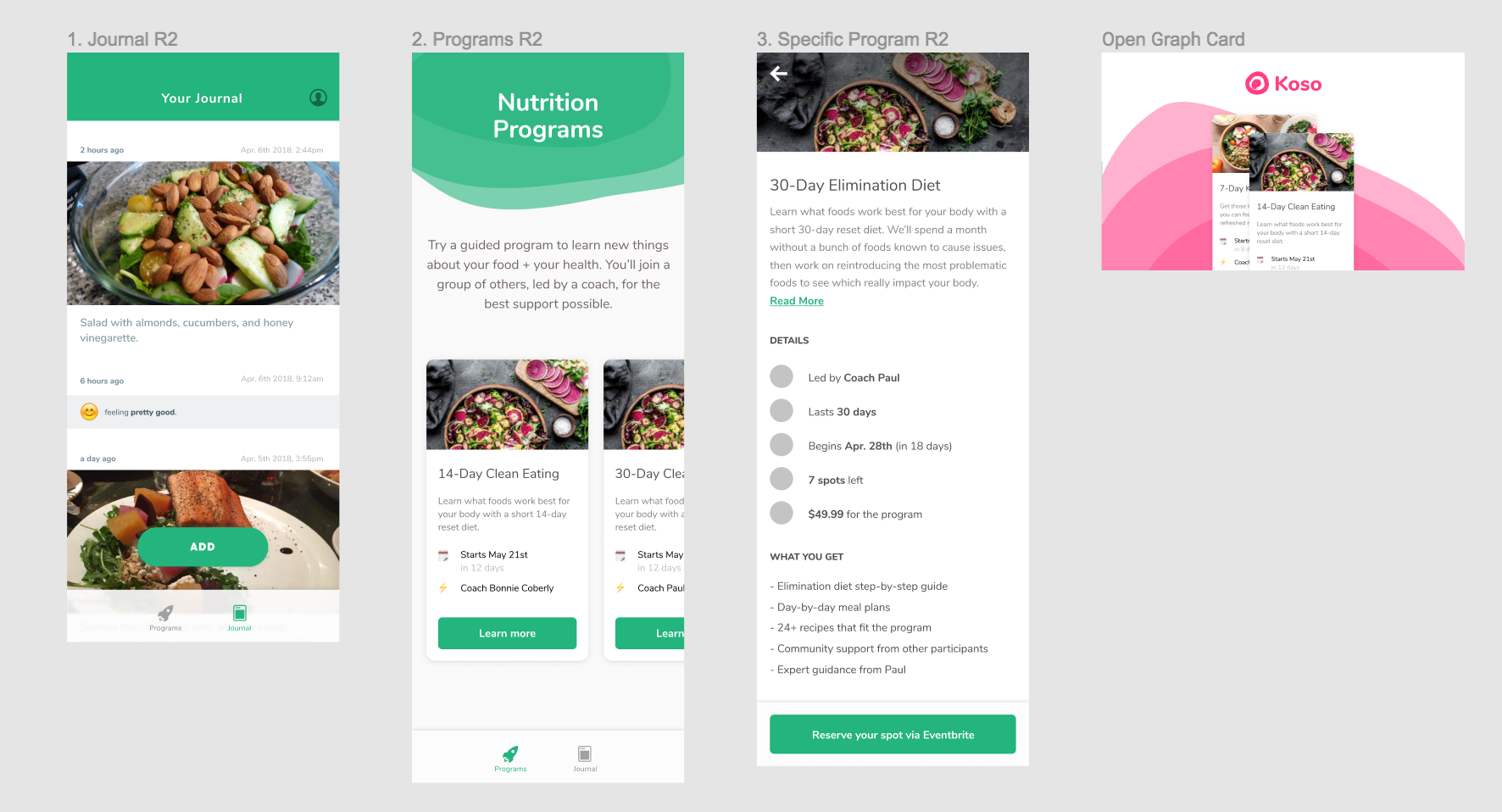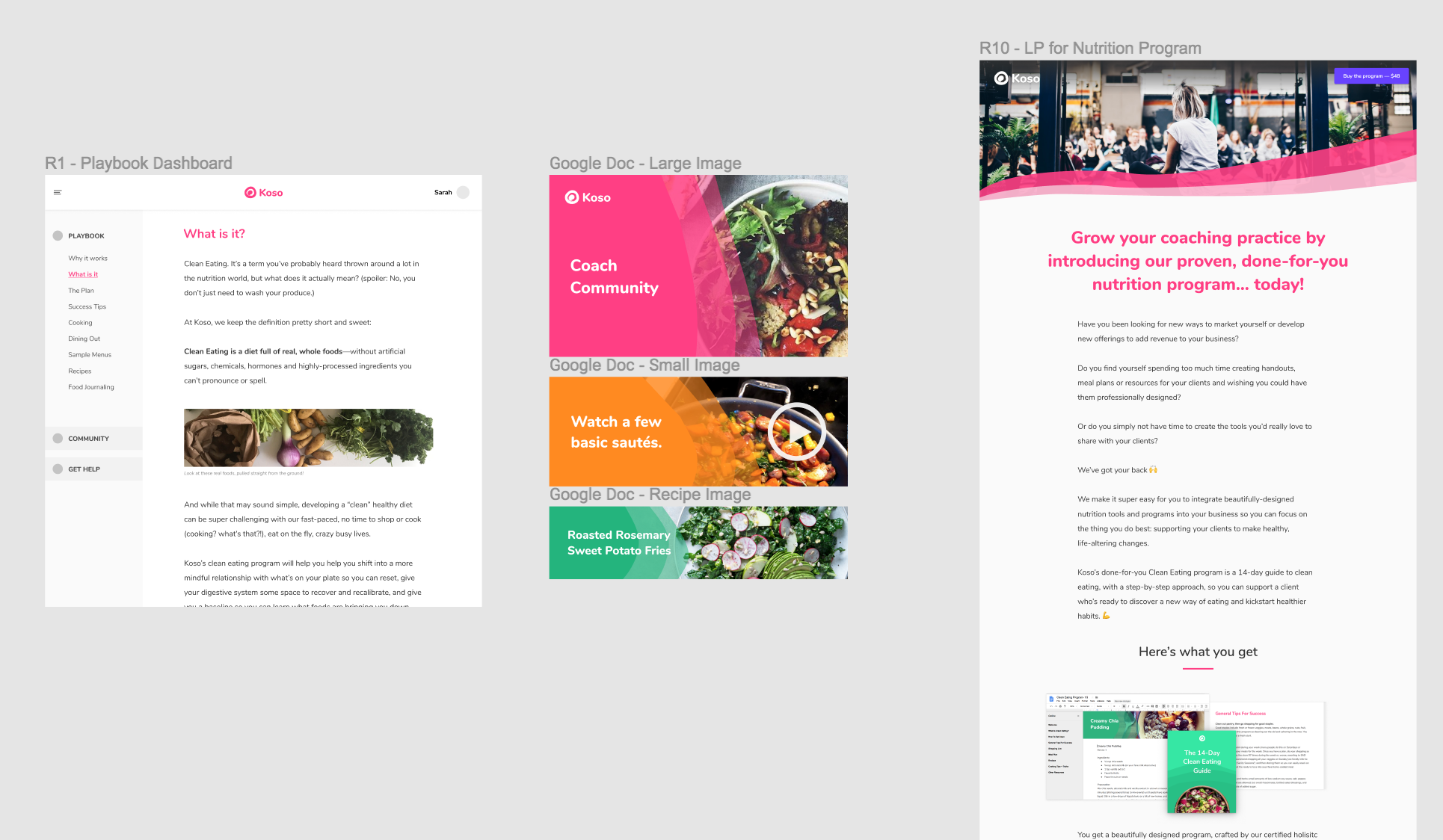The 6-month Koso Retrospective

The idea for Koso began early 2018, when I connected with my cofounder Bonnie over coffee & a mini-hike to share ideas.
We’re both health/wellness entrepreneurs, and had worked briefly together at our last company (Territory Foods), so we hit it off quickly, and found lots of concepts that excited us.
We both saw opportunities in nutrition × coaching, and we were both aligned on the type of biz we wanted to build (SaaS, small team, bootstrapped.)
We shared a strong vision: we believe that the connection between food + health is vastly under-appreciated, and we can help a ton of people live their best lives by understanding this connection, and making it easy to take action. Having access to foods that heal should be a fundamental right for every living person 🌱
Bonnie brought a huge network of health coaches, nutritionists, functional practitioners, and other wellness pros that she’d built over her career as a certified holistic health coach (inc. building her own meal delivery business from scratch, cooking & all!)
I had a “shelved” product that gave us a place to start. About 5 years ago, I made Kale for iOS, basically Instagram as a food journal. Back then, I had just started exploring a biz model before I joined a company full-time and put Kale on the shelf.
Kale aligned well with the vision Bonnie and I wanted to explore, so we decided to start with that and pick up where I left off years ago.
Since then, we’ve iterated through 4 different approaches:
- Food journal coaching system
- Food + symptom log for gut health patients
- Coach-led group nutrition challenge platform
- Done-for-you nutrition program for coaches
And at each step, I’ve kept detailed notes and reflections that have helped us work our way closer and closer to a great product. That’s what I want to share here in our 6-month review.
Hold on… why are you sharing this publicly? This is the kind of stuff that most companies keep locked away, their “proprietary information” and secret knowledge that gives them the edge.
Lol, f that. Sharing is caring ✌️
First off, writing brings clarity, so I was already writing this for myself and my team. Since it’s being written, and I’ve learned so much while doing it, I figured I’d pass it along in case it helps anyone else with their business, process, or product. A rising tide lifts all ships, my friends.
Lastly, this is for folks who will work with me in the future. This kind of intentional, thoughtful, and deliberate work is what you can expect.
The First Approach

What’s the concept? A simple food journal for folks making a change to their diet, where coaches can easily follow clients’ journeys.
What people problem were we solving? From having formally interviewed dozens of coaches, we learned about a few jobs that gave us confidence.
Those JTBDs were: 1) If you’re looking to change your health, experts will tell you food journals are effective, but journaling is hard, and mpst journal apps have unecessary stuff (nutrition info, super detailed logging, awkward social tie-ins) 2) Coaches are always looking to save time—especially boring administrative stuff like asking a client to send over their log—so coaches can spend more time doing important things (new clients, enjoying their time, side hustling.) 3) Health coaches are always looking for new, motivated clients
What was our plan of attack? Our product focus = a super easy, fast food journal—it needed to be incredibly simple since asking folks (even motivated folks) to log their food is a tough habit to get going and maintain, even for a short period of time (yeah, even as short as a week.)
Our business focus was showing coaches the value of a super simple food journal (which meant they’d be more likely to do it, and succeed with the coach), where the coach had the latest info in their pockets at all time, plus the help of little automated things like reminders and encouragement. We were targeting a SaaS model for access, free for clients, and charged for caoches (e.g. $75/mo allowed you to onboard 40 clients, $200/mo allowed up to 150 clients.)
Our coach acquisition plan was to sign up coaches from our network (we’re personally connected to thousands) through direct sales.
Our client acquisition plan was… unecessary right then. We knew part of the value prop for coaches was “find new clients”, so we figured client acquisiton would play an important role down the road, but it wasn’t something we had to figure out at the start. First we had to see if we could even get coaches paying to solve the first two JTBDs.
What did we do? What did we learn? We started conducting interviews, while refreshing the mobile app for Kale (bringing it up to iOS 11 speed + prototyping a coaching flow.)
From informal interviews with health coaches from our network, it sounded like coaches found it (easy customer logging) interesting, but it wasn’t solving a big pain point for them.
We also heard that bringing new clients (a la our non-existent client acq plan, where we’d suggest coaches for folks) would be valuable enough for payment. But, we didn’t have a compelling client acq plan, so we couldn’t act on the “help me find clients” JTBD yet.
All-in-all, it felt like we were too generic, so we looked to focus on a more niche audience and value-prop.
The Second Approach

What’s the concept? A simple food + symptom journal for folks struggling with gut health issues.
What people problem were we solving? We were working through the same JTBDs as the first approach, we just put a finer point on the details.
Instead of “anyone looking to change their health”, we focused on “people suffering from digestive problems”. Instead of “coaches looking to automate”, we focused on “functional medicine practitioners that wanted to automate more of their practice.” We ignored the “bring new clients” JTBD again, for now.
What did we do? What did we learn? We conducted interviews, and we started prototyping an app based on our own experiences with food/symptom tracking.
The informal interviews with nutrition-focused coaches told us they wouldn’t use it because they don’t recommend journaling—instead, they prepare a relatively strict meal plan, and clients have to follow it. No need to journal because they have to eat the prescribed food (there’s a little flex built into their meal plans)
We also learned from informally interviewing a few folks with digestive issues that they would really appreciate anything that makes tracking their intake + symptoms easier. They’re suffering because they can’t find the right connection, so they’d do almost anything to figure it out. Most folks we spoke with currently log using a spreadsheet, or by hand. Some used an app like Cara, but found it too complicated.
To be clear: we hadn’t yet sold anything. We didn’t have a clear offering or pricing model. Sure, we modeled a few things out. We iterated on a mobile app a few times as we showed folks the prototype.
But from the signals we were getting from interviews, we weren’t excited about how this was looking (our fear: it looked like another 6 months of work to get a few deals closed, only to learn it’s not the sort of biz we wanted to build.)
🤔 Looking back now, I think we got impatient, and moved to the next shiny thing too soon.
The Third Approach

Whats the concept?
- A marketplace for coach-led, group nutrition challenges, eg. Whole30, or 14-day Clean Eating reset
- Acq. channel: primarily through a coach’s social network. We onboard coaches to host challenges, and rely on coaches to promote their own events. The assumption was that over time, the clients would become more involved with other events hosted by other coaches, too.
- Model: we looked to coaches for cash. We were thinking typical SaaS, where coaches would pay a monthly fee to have the ability to host events (a la Meetup model.) We also considered a % model, where coaches could charge for events, and we’d get a cut of that (a la Eventbrite.)
What people problem are we solving?
- For eaters: JTBDs around feeling their best, losing weight, actually committing to a program, making a health change
- For coaches: flexibility/more bandwidth/more impact (remote programs allow all this), new clients (programs encourage bring a friend)
What did we do? What did we learn?
- We devised our own program (a 14-day and 30-day “clean eating reset”) to see how we’d run it. We figured we’d cobble together different tools, see where the most friction was, and build software to ease those pains. Over time, we’d have a pretty nice platform.
- We used our app as the landing page (promoted our programs in there), updated our web landing page to highlight programs, used Eventbrite for transactions/tickets/seats, FB group for chat as we ran the challenge, and wrote our own guide to clean eating via Google Docs.
- We promoted for 3 weeks, couldn’t convince anyone from our network to sign up at the price we had ($50, oof, not even that high), and no organic traffic from app (only like 10 people anyhow)
- … but now we had this Clean Eating program we made, just sitting there
The Fourth Approach

What’s the concept?
- A “done-for-you” nutrition program for coaches that want to integrate nutrition into their practice, or nutrition coaches who want a beautiful template to kickstart their own programs.
What people problem are we solving?
- Some coaches don’t feel comfortable writing their own nutrition programming (e.g. they might be a personal trainer)
- Some coaches don’t have the time to put their own programs together, but really want to
- Some coaches want something beautiful that looks professional, but can’t (or dont know how to) invest in design
What did we do? What did we learn?
- We doubled down on our program around clean eating, adding much more content so it could be a self-serve document. Plenty of new parts: why it works, what it’s for, what’s in/out, how to do it, meal plan, sample recipes, shopping list, cooking tips, eating out, prepared meals, etc.
- We made it a Google Doc, and spent effort making it look beautifully designed. For coaches, it’s a format they’re familiar with, so easy to modify and make their own. For us, it was easy to create and collaborate on. It’s also easy to “sell” via the GDocs copy mechanism so each coach can get a copy.
- We published a landing page explaining to coaches the benefits of getting our program.
- We tried direct sales email (with a cold list, ~50 folks) + super basic paid ads (1 week) + personal social promo (1 week)… and got no sales.
- Feedback centered around “this looks great! “… but no sale.
- We’re still collecting feedback here to pinpoint “why”, especially since most informal feedback has been pretty positive
Today - Summer 2018
- Reviewing feedback from the DFY nutrition program concept. We’re considering offering the 1st version of the guide for free as a PDF so we can build an interest list of coaches, then down the road offering a paid version that takes it to the next level (based on feedback we collect from the free version.)
- We’re also thinking about shifting framing of value prop from coaches to end-consumers, folks who want to change their diets, are motivated, and just want a guide. We’re thinking along the lines of Bodyboss, Kayla Itsines, Beachbody, etc.
- We’re longing for a holistic health community. How can we build a community of wellness professionals? We started experimenting with a newsletter for wellness industry biz + research; We’re contemplating an in-person meetup for holisitc health pros to share and support each other
- Looking at other oppys too: building tools for remote coaches; partnering with corporate wellness companies to license content from a coach community; niche coaching tools targeted to specific audiences (e.g. startup founders, high-performance athletes, diabetics, elderly)